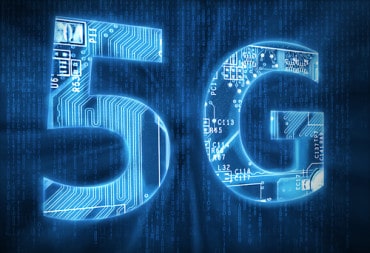
The IoT landscape is rapidly evolving, bringing with it both incredible opportunities and significant security challenges. The U.S. Cyber Trust Mark has the potential to address these challenges by providing a clear and reliable indicator of product security.
The Internet of Things (IoT) has transformed the way we live, work, and interact with technology. From smart home devices that regulate our environment to industrial systems that optimize production, IoT has embedded intelligence into every facet of our daily lives. However, with this unprecedented connectivity comes a significant challenge: ensuring the security of these interconnected devices. As IoT continues to evolve, so must our approach to securing the ecosystem.
The U.S. Cyber Trust Mark program represents significant progress in making IoT safer and less vulnerable to attacks, providing Americans with the information they need to make informed decisions through this new cybersecurity labeling program.
The Rise of IoT
No longer just interesting gadgets, IoT devices have evolved into integral components of our modern life. The number of IoT devices worldwide is expected to reach nearly 30 billion by the end of this decade, according to statistics shared on Statista. We find IoT devices in everything from consumer electronics like smart thermostats and fitness trackers to complex critical systems in healthcare, transportation, and critical infrastructure.
We can’t underestimate the benefits that IoT devices have brought us in such a short time. However, the proliferation of these devices has also expanded the attack surface for cybercriminals.
Many IoT devices have been deployed with minimal security measures, making them vulnerable to hacking, data breaches, infiltration use, and other cyber threats. The lack of standardized security protocols has exacerbated these vulnerabilities, leaving both consumers and industries at risk.
The Need for a Cyber Trust Mark
Administered by the FCC with input from NIST, the U.S. Cyber Trust Mark program is an emerging concept aimed at addressing the security challenges we encounter with consumer IoT devices. Similar to how energy efficiency labels guide consumers in making environmentally friendly choices, a Cyber Trust Mark provides a clear indication of a product’s security posture. This mark will serve as a benchmark for security standards, helping consumers and businesses make informed decisions when purchasing IoT products.
Encouraging Industry Accountability
The U.S. Cyber Trust Mark will also hold manufacturers accountable for the security of their products. Currently, many IoT devices are rushed to market with little regard for security, prioritizing functionality and cost over protection. A standardized security mark incentivizes manufacturers to prioritize security in their product development processes. This shift could lead to a more secure IoT ecosystem, where IoT products and associated devices are designed with security in mind from the outset.
The Role of Regulatory Bodies
For the U.S. Cyber Trust Mark to gain traction, it will require support from regulatory bodies and industry organizations after it officially goes live early in 2025. Governments and standards organizations can play an important role in finalizing the criteria for the mark and overseeing its implementation. Collaborative efforts between the public and private sectors will be essential in developing the U.S. Cyber Trust Mark into a robust and universally recognized symbol of IoT security.
See also: New High-Level IoT Security Guidelines from NIST
Establishing Security Standards
Although participation in the program is voluntary, the requirements when applying the U.S. Cyber Trust Mark to one’s products are not. The FCC Cyber Trust Mark Rule, released on February 22, 2024, established the program and its initial requirements, mandating manufacturers to provide specific information via an API displayed to the consumer in a simple, uniform way. These standards cover various aspects of IoT security, including:
- Device Authentication and Identity Management: Ensuring that only authorized devices can connect to a network and interact with other devices.
- Data Encryption: Protecting data both at rest and in transit to prevent unauthorized access and tampering.
- Firmware and Software Updates: Implementing mechanisms for secure and timely updates to patch vulnerabilities and improve security features.
- Vulnerability Management: Regularly assessing and addressing potential security weaknesses in devices and their associated networks.
- User Privacy: Safeguarding user data and ensuring that devices comply with privacy regulations.
The Two-Step Certification Process
The rigorous labeling process for manufacturers will involve a two-step process to ensure the cybersecurity label’s integrity and reliability. Here’s a summary of the process according to the FCC’s guidelines:
Product Testing
Manufacturers will be required to use an accredited and Lead Administrator-recognized laboratory (such as CyberLAB, CLA lab, or an in-house lab) to test their IoT products for compliance with FCC rules. These labs will produce a comprehensive test report detailing the product’s compliance with the established cybersecurity standards based on technical criteria outlined in NIST IR 8425.
Certification Application
After successful testing, manufacturers must submit an application to an FCC-recognized Certification Lab Authority (CLA), which is an accredited certification body. This authority will review the test report and certify the product as fully compliant with all relevant rules of the FCC IoT Labeling Program.
This process ensures that only products meeting strict cybersecurity standards can carry the U.S. Cyber Trust Mark, enhancing consumer confidence in the security of their IoT devices.
Challenges and Considerations
While the concept of a Cyber Trust Mark is promising, several challenges must be addressed to ensure its long-term success:
Implementation: Establishing a credible framework for certifying products and awarding the U.S. Cyber Trust Mark. This process must be transparent, efficient, and scalable.
Enforcement: Ensuring that manufacturers adhere to the standards and that non-compliant products are identified, flagged, and addressed.
Education: Raising awareness among consumers and businesses about the importance of IoT security and the value of the U.S. Cyber Trust Mark.
Timeline and Infrastructure: The program’s official launch has been delayed to 2025 due to regulatory and procedural requirements. Although technical details and review processes are defined, the necessary infrastructure for certification is not yet in place, leaving the exact time frame for implementation and certification uncertain.
The Future of IoT Security
The U.S. Cyber Trust Mark represents a significant step forward in the evolution of IoT security. As the number of connected devices continues to grow, so does the need for robust security measures. By establishing clear and enforceable security standards, the U.S. Cyber Trust Mark can help transform IoT from merely smart to truly secure.
In the long term, the success of the U.S. Cyber Trust Mark will depend on the collective efforts of manufacturers, regulatory bodies, and consumers. Manufacturers must commit to integrating trusted security into their product designs, while regulatory bodies must provide the necessary oversight and enforcement to validate IoT products. Consumers, too, have a role to play by only choosing IoT products that carry the U.S. Cyber Trust Mark and demanding higher security standards from manufacturers.
Conclusion
The IoT landscape is rapidly evolving, bringing with it both incredible opportunities and significant security challenges. The U.S. Cyber Trust Mark has the potential to address these challenges by providing a clear and reliable indicator of product security. By fostering a culture of security-first thinking and holding manufacturers accountable, we can ensure that the future of IoT is smart and secure.
In this era of ubiquitous connectivity, trust is paramount. The U.S. Cyber Trust Mark can be the beacon that guides us toward a safer and more secure IoT ecosystem where innovation thrives without compromising security. It is an essential first step in the journey from smart to secure, ensuring that the benefits of IoT can be enjoyed with confidence and peace of mind.






























